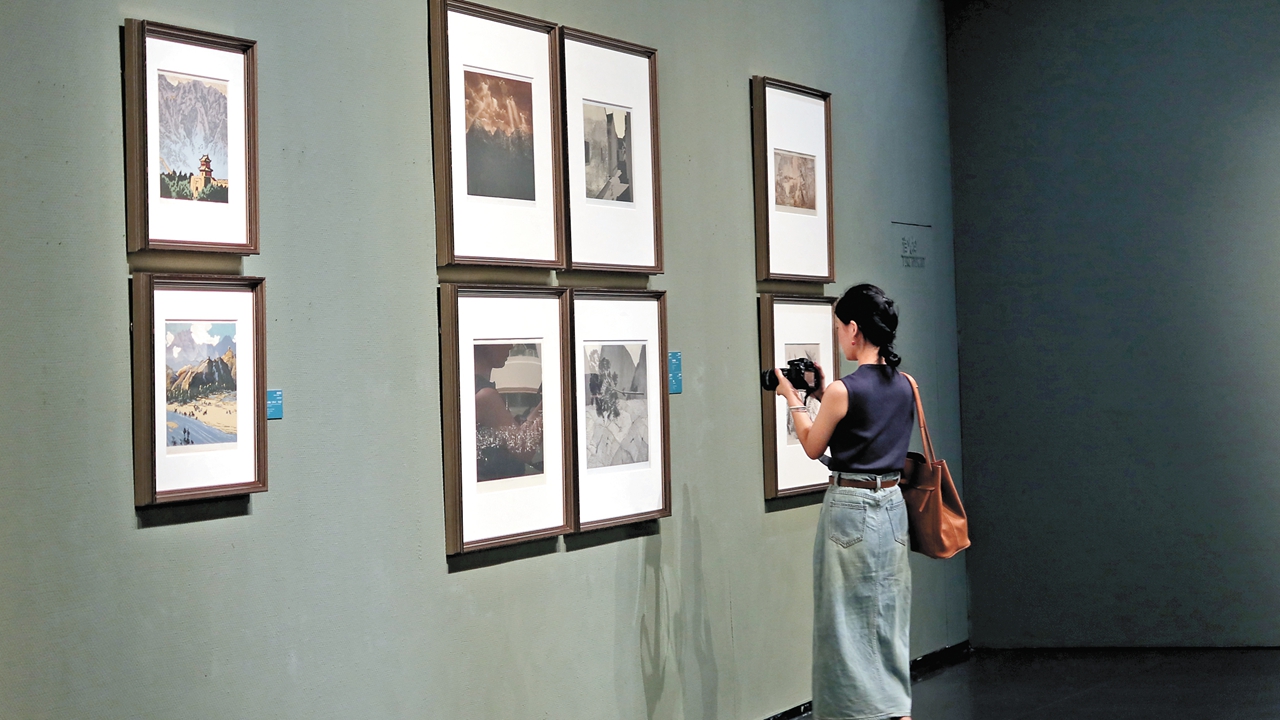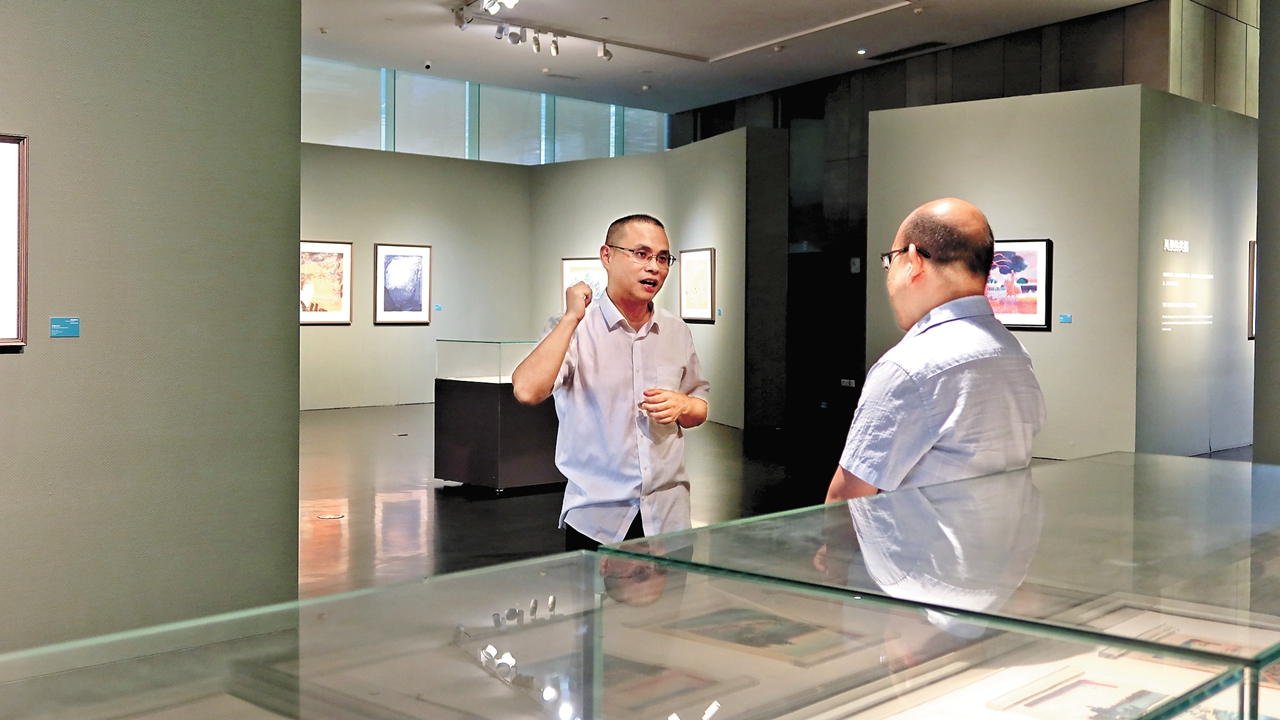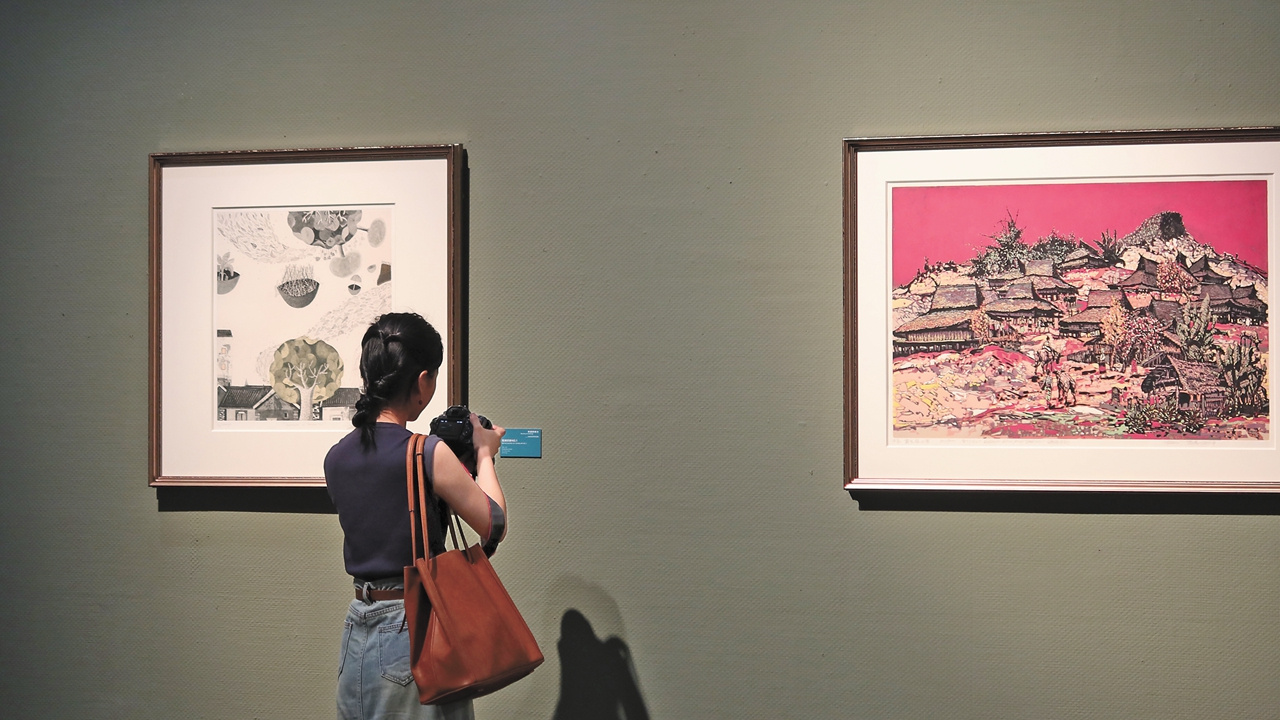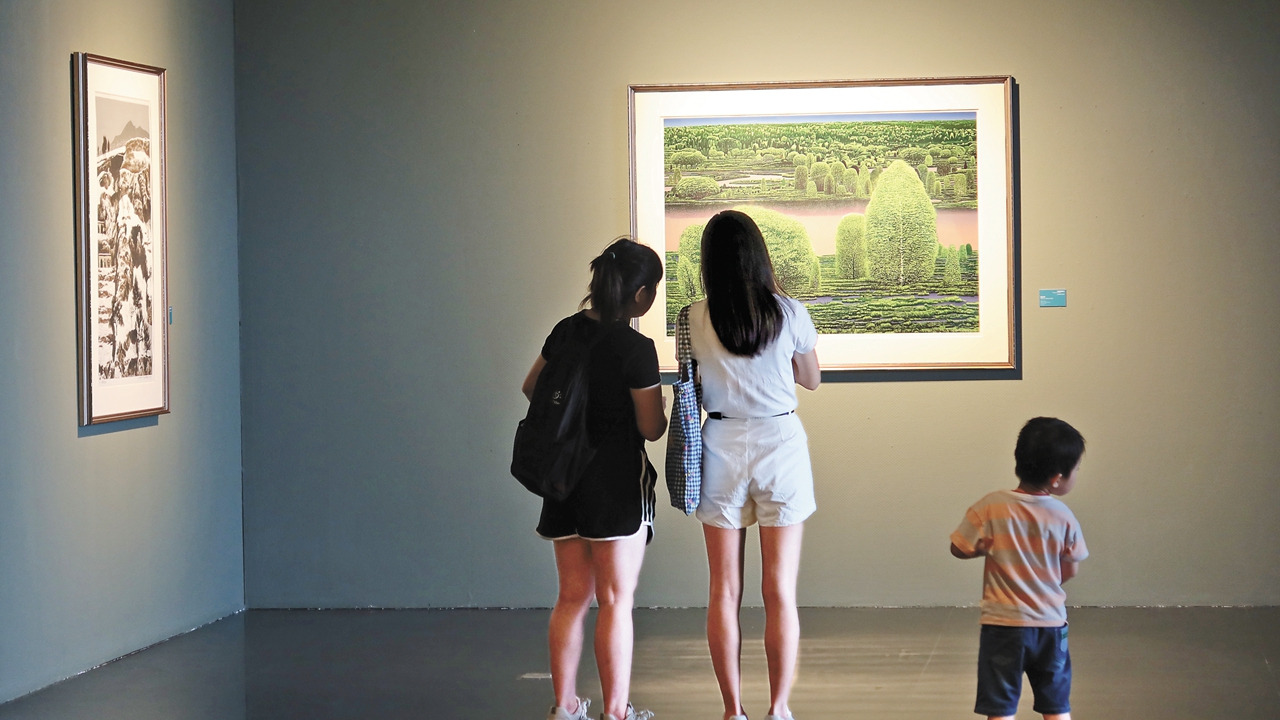A trip to intl. landscapes through prints exhibition
Writer: Cao Zhen | Editor: Zhang Chanwen | From: Shenzhen Daily | Updated: 2023-08-09
From the depiction of landscape themes in artworks, one can observe the artists’ understanding and attitude toward nature, the self, and the essence of art. “Every landscape is, as it were, a state of the soul,” said the Swiss philosopher Henri Frederic Amiel.
The “Meaning of Landscape,” a landscape prints collection exhibition, is on show at the China Printmaking Museum, enabling visitors to see the natural and humanistic landscapes through the interpretation of international printmaking artists.

A visitor takes photos at the “Meaning of Landscape” exhibition at China Printmaking Museum. Photos by Chen Siqi
Curated by Zhao Jiachun, deputy director of China Printmaking Museum, the exhibition has been listed among the 2023 Project of the National Arts Museum Refined Collection Exhibition Season organized by the Ministry of Culture and Tourism.
The exhibition is divided into three sections: “The Return of Nature,” “The Hidden Beauty of Landscape” and “Resonance of Landscapes,” featuring a total of 58 landscape printing artworks from home and abroad. At the exhibition, visitors can check the different techniques of woodcut, lithography, etching, silkscreen, relief and reduction block print woodcut.

Zhao Jiachun (L), the exhibition curator, introduces artworks to a printmaking enthusiast.
“Pine Valley,” created by Chao Mei, one of the first-generation artists of the Beidahuang print school, in 1984, shows a boundless pine forest in a valley with two eagles spreading their wings and flying upon the forest in Beidahuang, or the “Great Wilderness,” of Northeast China’s Heilongjiang Province. Instead of showing the dangerous and difficult terrain of the valley, it shows the open and magnificent landscape, conveying his affection to the natural landscapes.
Swarms of demobilized soldiers pioneered a massive exploration of Beidahuang in the late 1950s. They not only cultivated the wasteland but also created prints with such basic implements as knives and woodblocks. Their creations formed a distinctive school of engraving that was later named after the vast plain upon which they toiled for decades. The Beidahuang print school extensively influenced artistic development in other parts of Heilongjiang and still nurtures local artists.
In Kang Jianfei’s artwork titled “Stage,” visitors will see a carpet of grass instead of the usual characters such as influential leaders and glamorous heroines standing on the stage. The contemporary Chinese artist aims to convey through the artwork the message that everyone, including ordinary individuals, has the right to be on the stage and have their voices heard. Kang is an artist who explores humanistic concepts through his artworks, seeking to extend his thoughts to viewers.

A visitor observes “Skyglow Shining on the Mountain House.”
“Skyglow Shining on the Mountain House,” uses brightly saturated colors such as red, green and yellow to depict a scene when the sky’s glow shines on a village in Southwest China’s Yunnan Province. The printing artwork created by He Kun has the only one print and cannot be copied as a reduction block print like this one usually created with one block, carved and printed repeatedly for each color on the print. He is one of the contemporary Chinese representative paintings dedicated in reduction block print.

Visitors admire artworks at the exhibition.
Artists are good at capturing the exquisite colors and unique meanings of nature. However, they deliberately choose printmaking, known as an art with minimal color relationships, to carry their emotions and feelings. The curator expressed his hope that viewers could appreciate the beauty of the landscapes and the power of printmaking, and perceive the artists’ emotions and resonate with them.
Dates: Through Aug. 31
Tickets: Free
Booking: WeChat account “GL_PRINTS”
Venue: China Printmaking Museum, Longhua District (中国版画博物馆)
Metro: Line 4 to Niuhu Station (牛湖站), Exit C and then take a taxi